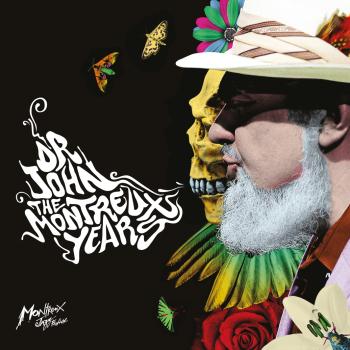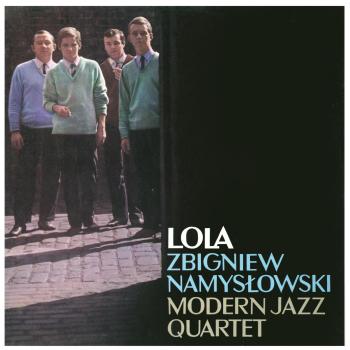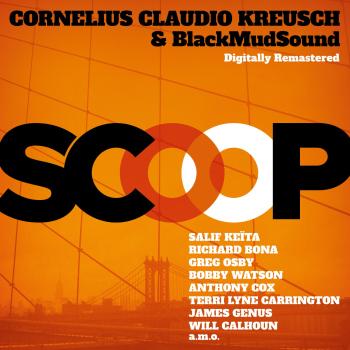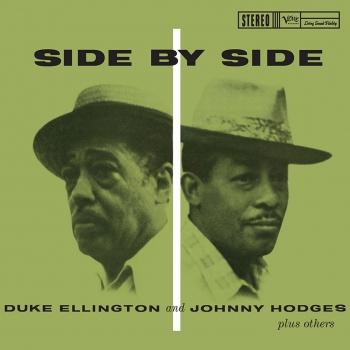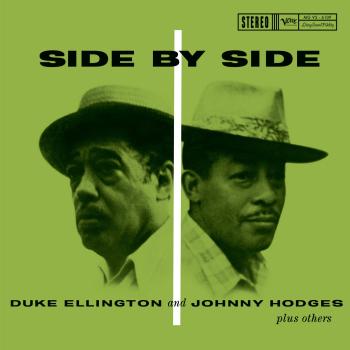
Side By Side (2025 Remaster) Duke Ellington & Johnny Hodges
Album info
Album-Release:
1959
HRA-Release:
18.04.2025
Album including Album cover
I`m sorry!
Dear HIGHRESAUDIO Visitor,
due to territorial constraints and also different releases dates in each country you currently can`t purchase this album. We are updating our release dates twice a week. So, please feel free to check from time-to-time, if the album is available for your country.
We suggest, that you bookmark the album and use our Short List function.
Thank you for your understanding and patience.
Yours sincerely, HIGHRESAUDIO
- 1 Stompy Jones (2025 Remaster) 06:38
- 2 Squeeze Me (2025 Remaster) 04:36
- 3 Big Shoe (2025 Remaster) 05:35
- 4 Going Up (2025 Remaster) 04:51
- 5 Just A Memory (2025 Remaster) 05:52
- 6 Let's Fall In Love (2025 Remaster) 06:45
- 7 Ruint (2025 Remaster) 02:31
- 8 Bend One (2025 Remaster) 02:57
- 9 You Need To Rock (2025 Remaster) 05:51
Info for Side By Side (2025 Remaster)
Newly remastered! When Norman Granz signed Johnny Hodges to a recording contract in 1951, it was a prelude to Hodges's leaving the Duke Ellington orchestra to lead his own small band. Four years later Hodges was back in the Ellington fold, but he continued to record for Granz under his own name. Side by Side, recorded in 1958 and 1959, is a throwback to the small-group sessions Ellington recorded with Hodges and other members of his orchestra in the Thirties, but with a couple of important differences: the absence of Ellington himself on several cuts (with Billy Strayhorn taking over at the piano), and the presence of such notable non-Ellingtonians as drummer Jo Jones and trumpeters Roy Eldridge and Harry "Sweets" Edison.
The most awesome, the most swinging rhythm group of all times! Fantastic winds! There’s only one guy who can make an alto saxophone sound like this – somewhere between melancholy and aggressiveness! Superlative after superlative come to mind when you listen to these nine numbers, which were recorded at the end of the Fifties.
The idea of scaling down Ellington’s band for jam-session-like numbers is absolutely genial because it offers soloists great opportunities to display their artistry. And these wind musicians are the best of the best, masters of their instruments. We have Roy Eldridge, who influenced the transition from swing to be-bop and a modern style of trumpet playing; Harry Edison, whose light and airy Basie-swing style cannot be denied; and Ben Webster, who amalgamates both the Count’s and the Duke’s style of swing. And then there is Johnny “The Rabbit” Hodges, whose natural feeling for rhythm and gentle tone is brought to optimal expression within this concept.
Squeeze Me and Stompy Jones both stem from the Forties and are often performed, but in this session they have been rejuvenated in a masterly fashion. The standard Let’s Fall In Love demonstrates Lawrence Brown’s highly personal sound on the trombone and then goes on to spotlight Roy Eldridge and Johnny Hodges, both of whom prove that they are at the very zenith of their artistic prowess. Ruint and Going Up provide a showcase for Johnny Hodges, while Just A Memory focuses on the gentle, sometimes rather sentimental sound of Ben Webster.
Duke Ellington, piano
Johnny Hodges, alto saxophone
Ben Webster, tenor saxophone
Roy Eldridge, trumpet
Harry "Sweets" Edison, trumpet
Lawrence Brown, trombone
Les Spann, flute, guitar
Billy Strayhorn, piano
Al Hall, bass
Wendell Marshall, bass
Jo Jones, drums
Original sessions produced by Norman Granz.
Tacks 1, 2, and 4 recorded February 20, 1959, Columbia Studios, New York City.
Tracks 3 and 5-9 recorded August 14, 1958 at Nola Studios, New York City.
Digitally remastered
Duke Ellington
called his music 'American Music' rather than jazz, and liked to describe those who impressed him as 'beyond category. He remains one of the most influential figures in jazz, if not in all American music and is widely considered as one of the twentieth century's best known African American personalities. As both a composer and a band leader, Ellington's reputation has increased since his death, with thematic repackaging of his signature music often becoming best-sellers. Posthumous recognition of his work include a special award citation from the Pulitzer Prize Board.
Duke Ellington influenced millions of people both around the world and at home. He gave American music its own sound for the first time. In his fifty year career, he played over 20,000 performances in Europe, Latin America, the Middle East as well as Asia.
Simply put, Ellington transcends boundaries and fills the world with a treasure trove of music that renews itself through every generation of fans and music-lovers. His legacy continues to live onand will endure for generations to come. Winton Marsalis said it best when he said 'His music sounds like America.' Because of the unmatched artistic heights to which he soared, no one deserved the phrase “beyond category” more than Ellington, for it aptly describes his life as well. He was most certainly one of a kind that maintained a lifestyle with universal appeal which transcended countless boundaries.
Duke Ellington is best remembered for the over 3000 songs that he composed during his lifetime. His best known titles include; 'It Don't Mean a Thing if It Ain't Got That Swing', 'Sophisticated Lady', 'Mood Indigo', “Solitude', 'In a Mellotone', and 'Satin Doll'. The most amazing part about Ellington was the most creative while he was on the road. It was during this time when he wrote his most famous piece, 'Mood Indigo'which brought him world wide fame.
Duke Ellington's popular compositions set the bar for generations of brilliant jazz, pop, theatre and soundtrack composers to come. While these compositions guarantee his greatness, what makes Duke an iconoclastic genius, and an unparalleled visionary, what has granted him immortality are his extended suites. From 1943's Black, Brown and Beige to 1972's The Uwis Suite, Duke used the suite format to give his jazz songs a far more empowering meaning, resonance and purpose: to exalt, mythologize and re-contextualize the African-American experience on a grand scale.
Duke Ellington was partial to giving brief verbal accounts of the moods his songs captured. Reading those accounts is like looking deep into the background of an old photo of New York and noticing the lost and almost unaccountable details that gave the city its character during Ellington's heyday, which began in 1927 when his band made the Cotton Club its home. ''The memory of things gone,'' Ellington once said, ''is important to a jazz musician,'' and the stories he sometimes told about his songs are the record of those things gone. But what is gone returns, its pulse kicking, when Ellington's music plays, and never mind what past it is, for the music itself still carries us forward today.
Duke Ellington was awarded the Grammy Lifetime Achievement Award in 1966. He was later awarded several other prizes, the Presidential Medal of Freedom in 1969, and the Legion of Honor by France in 1973, the highest civilian honors in each country. He died of lung cancer and pneumonia on May 24, 1974, a month after his 75th birthday, and is buried in the Bronx, in New York City. At his funeral attended by over 12,000 people at the Cathedral of St. John the Divine, Ella Fitzgerald summed up the occasion, 'It's a very sad day...A genius has passed.'
" class="ng-binding ng-scope">Duke Ellington And His Orchestra
This album contains no booklet.

